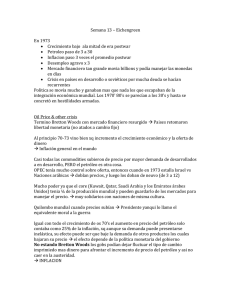

Many key foreign currencies began to appreciate against the dollar, despite heavy intervention. Nixon’s actions sent shockwaves through the international community. He wanted foreign currencies to appreciate against the dollar, but he did not want to devalue the dollar in terms of gold (Silber 2012, 93). balance-of-payments deficits on unfair trading practices and other countries’ unwillingness to share the military burden of the Cold War. While the flaws of Bretton Woods and the Federal Reserve’s monetary policy had certainly played a role in the situation, Nixon also blamed the U.S. In August 1971, President Nixon " closed the gold window," that is, he no longer allowed foreign central banks to exchange dollars for the U.S. By the summer of 1971, speculators were moving funds out of dollars and into foreign currencies, and central banks were rapidly converting dollars into U.S. The existing structure of fixed exchange rates seemed unsustainable in the face of such inflation. Inflation in the United States rose from less than 2 percent in early 1965 to 6 percent by the end of 1969.

balance-of-payments deficit and pumped even more dollars abroad. This difficult and uncertain situation became even worse after 1965. Treasury and the Federal Reserve tried to keep this from happening through stop-gap measures, but they could not solve the underlying paradox: Without additional dollar reserves, the system was unworkable with additional dollar reserves, the system was unstable.

The prospect of a dollar devaluation created strong incentives to exchange dollars for U.S. The deficit of gold implied that the United States might not be able to keep its pledge to convert dollars for gold at the official price. By 1961, however, the amount of dollar claims outstanding began to exceed the U.S. Consequently, the United States provided dollar reserves by running a persistent balance of payments deficit and promised to redeem those dollars for gold at $35 per ounce. Bretton Woods was based on gold, but the global gold stock could not meet the world’s demand for international reserves, without which pegged exchange rates were impossible. The basic structure of the Bretton Woods system contained a flaw that began to emerge in the early 1960s. Within fifteen months, the Bretton Woods system collapsed. The Smithsonian Agreement is what they came up with, but it proved too little, too late. They hoped to rescue an international arrangement that was rapidly disintegrating, the Bretton Woods system of fixed exchange rates. In December 1971, monetary authorities from the world’s leading developed countries met at the Smithsonian Institution in Washington, DC.


 0 kommentar(er)
0 kommentar(er)
